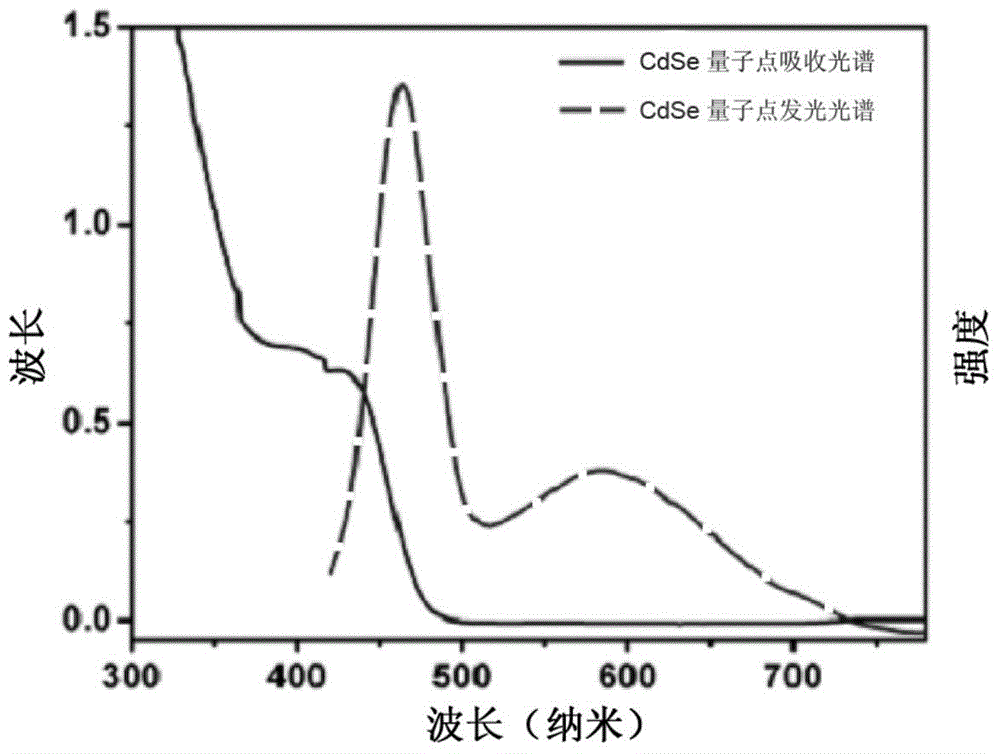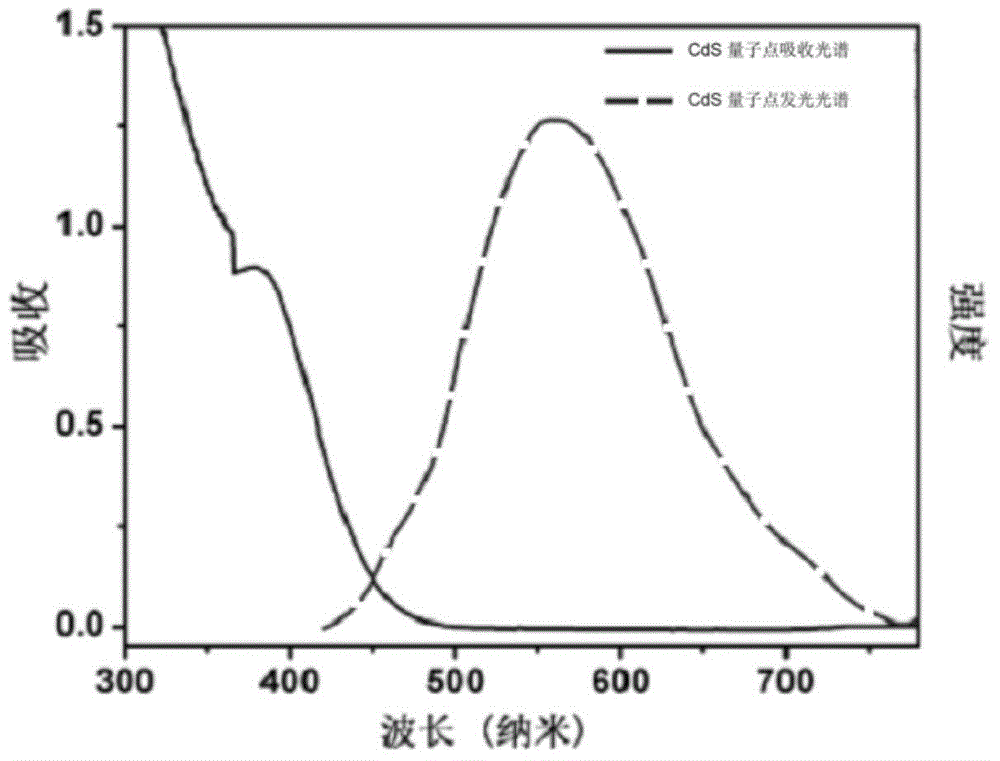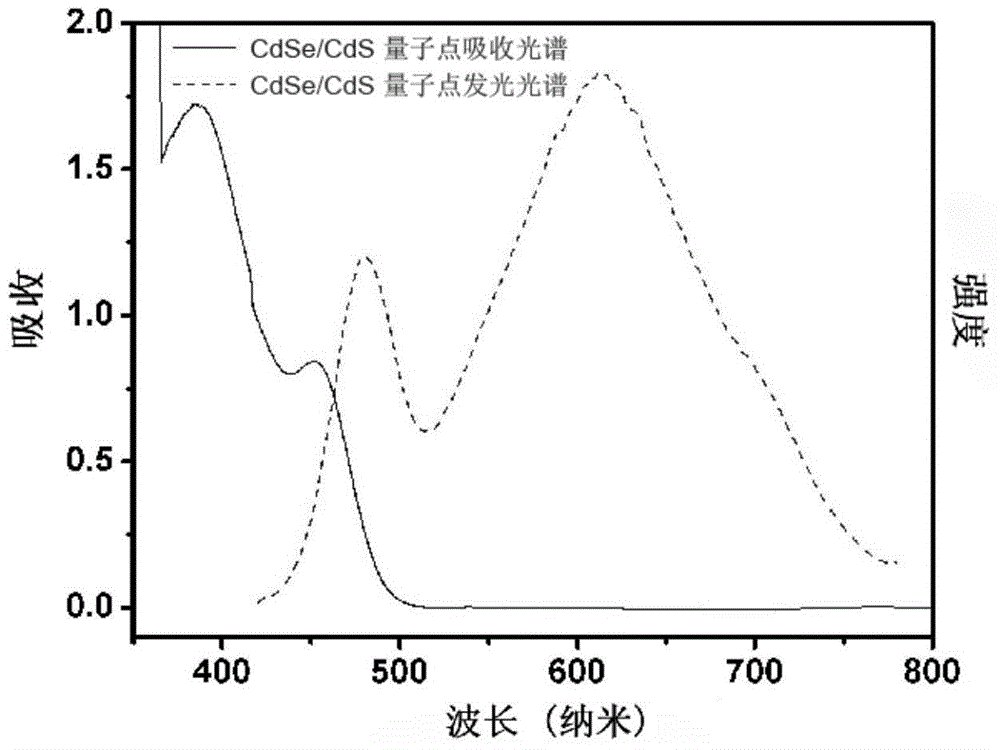Photocathode based on metallic oxides, quantum dots and hydrogen generation catalyst and preparation method and application of photocathode
A quantum dot and oxide technology, applied in electrodes, electrolysis process, electrolysis components, etc., can solve the problems of high equipment requirements, complex operation, high instrument conditions, etc., and achieve high utilization efficiency, good repeatability, and strong universality. Effect
- Summary
- Abstract
- Description
- Claims
- Application Information
AI Technical Summary
Problems solved by technology
Method used
Image
Examples
Embodiment 1
[0075] A preparation of a photocathode based on a metal oxide, a quantum dot and a hydrogen production catalyst and a method for producing hydrogen by photoelectrocatalysis, comprising the following steps:
[0076] Nickel oxide films were prepared by loading nickel oxide nanoparticles on the surface of tin-doped conductive glass by screen printing technology; then, the prepared CdSe quantum dots were adsorbed on the surface of nickel oxide films by means of chemical adsorption, and the linking molecule was thioglycolic acid ; Finally, the hydrogen-producing catalyst is prepared on the surface of the quantum dots by chemical deposition, and the hydrogen-producing catalyst is nickel hydroxide. The prepared photocathode was connected to the photoelectrochemical cell, and the photocathode system was built with pure water as the solvent, platinum sheet as the counter electrode, and Ag / AgCl electrode as the reference electrode. Use xenon lamp as light source (p=100mW / cm 2 ) irradia...
Embodiment 2
[0078] A preparation of a photocathode based on a metal oxide, a quantum dot and a hydrogen production catalyst and a method for producing hydrogen by photoelectrocatalysis, comprising the following steps:
[0079] The nickel oxide film was prepared by loading nickel oxide nanoparticles on the surface of tin-doped conductive glass by screen printing technology; then the prepared CdSe quantum dots were adsorbed on the surface of the nickel oxide film by means of chemical adsorption, and the linking molecule was mercaptopropane Acid; Finally, the hydrogen-producing catalyst is prepared on the surface of the quantum dots by chemical deposition, and the hydrogen-producing catalyst is nickel hydroxide. The prepared photocathode was connected to the photoelectrochemical cell, and the photocathode system was built with pure water as the solvent, platinum sheet as the counter electrode, and Ag / AgCl electrode as the reference electrode. Use xenon lamp as light source (p=100mW / cm 2 ) i...
Embodiment 3
[0081] A preparation of a photocathode based on a metal oxide, a quantum dot and a hydrogen production catalyst and a method for producing hydrogen by photoelectrocatalysis, comprising the following steps:
[0082] The nickel oxide film is prepared by loading nickel oxide nanoparticles on the surface of tin-doped conductive glass by screen printing technology; then the prepared CdSe quantum dots are adsorbed on the surface of the nickel oxide film by means of chemical adsorption, and the linking molecule is mercaptobutyl acid, and finally prepare a hydrogen-producing catalyst on the surface of the quantum dots by chemical deposition, and the hydrogen-producing catalyst is nickel hydroxide. The prepared photocathode was connected to the photoelectrochemical cell, and the photocathode system was built with pure water as the solvent, platinum sheet as the counter electrode, and Ag / AgCl electrode as the reference electrode. Use xenon lamp as light source (p=100mW / cm 2 ) irradiate...
PUM
 Login to View More
Login to View More Abstract
Description
Claims
Application Information
 Login to View More
Login to View More - R&D
- Intellectual Property
- Life Sciences
- Materials
- Tech Scout
- Unparalleled Data Quality
- Higher Quality Content
- 60% Fewer Hallucinations
Browse by: Latest US Patents, China's latest patents, Technical Efficacy Thesaurus, Application Domain, Technology Topic, Popular Technical Reports.
© 2025 PatSnap. All rights reserved.Legal|Privacy policy|Modern Slavery Act Transparency Statement|Sitemap|About US| Contact US: help@patsnap.com



